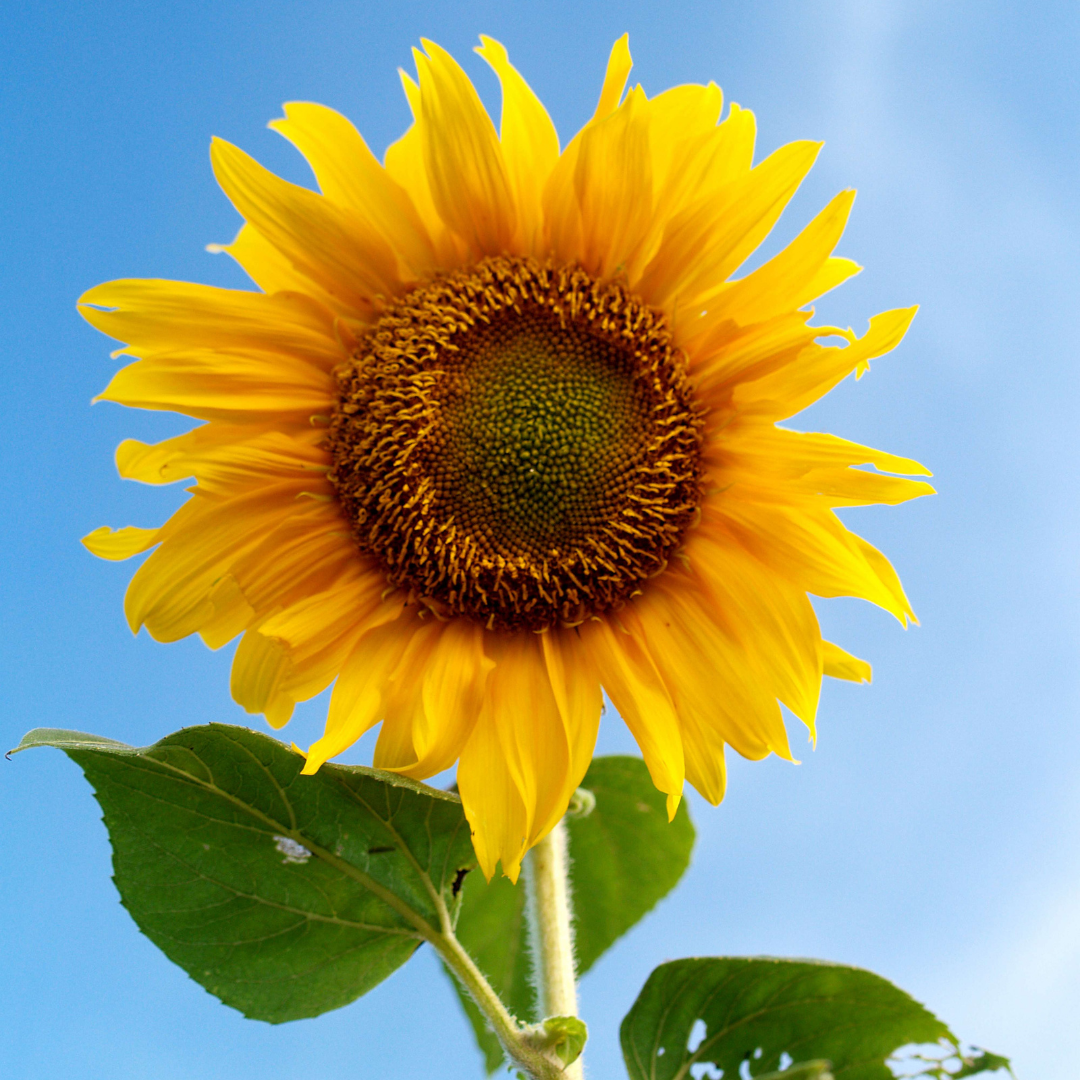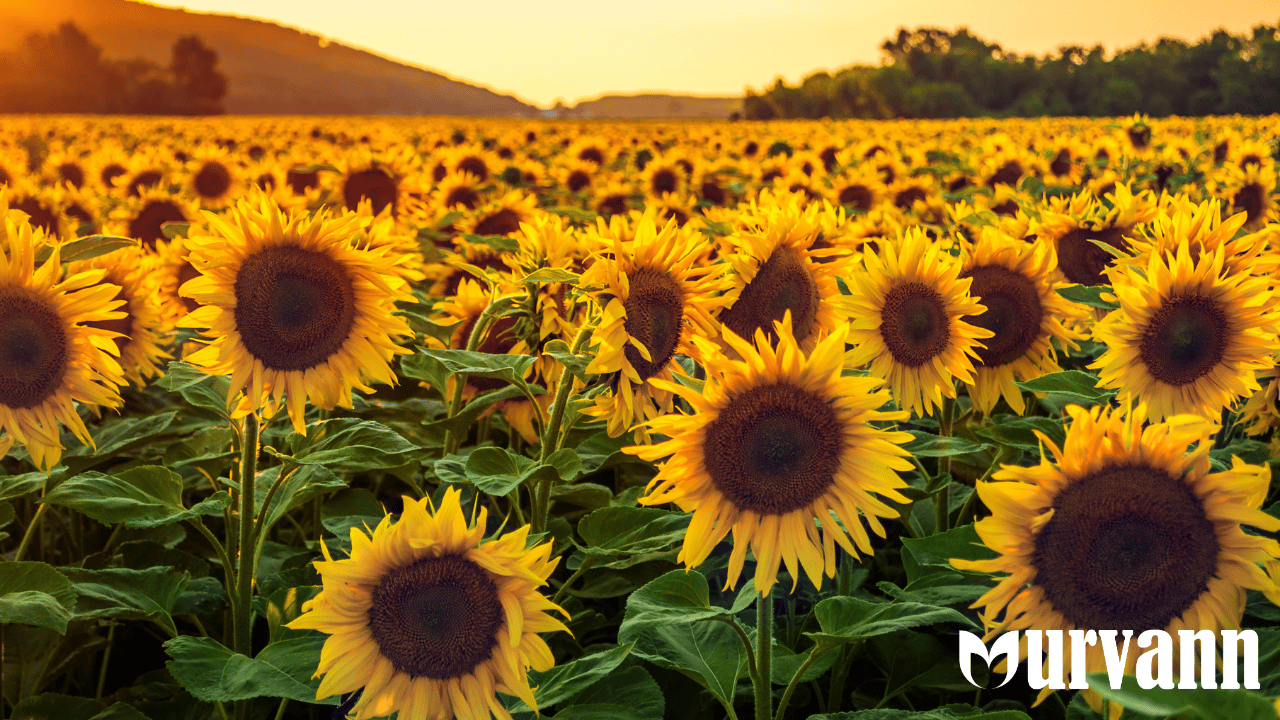I have always been really fond of sunflowers and how beautiful they look. There’s something so sweet about sunflowers, which is that they keep facing the sun, but when there’s no sun in the sky, they look at each other. My fondness grew so much more when I was able to grow a huge flower from a tiny seed.
Sunflowers are nature's way of showing off. They are bold, and they attract attention. Whether you want to add a burst of sunshine to your garden, cultivate your own nutritious food, or just amaze your neighbours with your plant-growing skills, sunflowers deliver on all counts.
Benefits of Sunflowers
They're serotonin boosters
Science actually has an answer for why you end up smiling each time you look at a sunflower. Their bright yellow colour is responsible for the release of a hormone called serotonin, responsible for making people happy and reducing stress. If you ever need to boost your mood, just plant sunflowers in your garden. Not only will you feel proud of yourself, but you’ll also leave with a smile on your face. You can get the seeds easily from Urvann.
Magnets for pollinators
If you like having a lot of birds and butterflies in your garden, simply plant sunflowers. Birds, bees, and butterflies flock to these flowers for a taste, and your garden will turn into a small pollinator sanctuary.
Nutrient Rich
Sunflower seeds are packed with vitamin E, magnesium, and selenium, all essential nutrients for skin health, immunity, and overall well-being. You can roast them for snacks, or have them in overnight oats, and even sprinkle them on salads. The best part is that they’re incredibly easy to harvest. Just let the flower heads dry out, rub the seeds free, and you’ve got homegrown nutrition literally at your fingertips.
Beginner friendly
With large seeds that can easily be managed and handled by little hands, they are impressively fast growing, making sunflowers the perfect “first plant” for children. Plus, the look on a child’s face when their sunflower grows taller than them is absolutely priceless.
Budget friendly
Sunflowers will actually give you your money’s worth. Not only will they make your garden look beautiful, but they will also give you hundreds of seeds for next year. All you need to start off is a packet of sunflower seeds, which costs less than a cup of coffee.
How to grow and care for your Sunflower
Now that I’ve convinced you how pretty these flowers are, let’s talk about how to grow sunflowers successfully:
Sunlight
Sunflowers aren't just named for their appearance; they literally need sun—and lots of it. Choose a spot that gets at least 6–8 hours of direct sunlight daily. Sun can be harsh and intense in India; morning sun with some afternoon shade works well for them, especially during peak summer months.
You also need to consider the fact that these flowers grow tall, which is why they need proper support. I personally suggest planting them against a fence or a wall, which will provide a nice background as well as the support they need.
Soil
Sunflowers aren't very particular about their soil requirements. They'll grow in pretty much any soil, though they prefer well-drained soil. If your garden soil resembles concrete when dry and sticky pudding when wet, mix in some compost and fertilizers to improve the texture.
While they'll tolerate poor soil, adding some nutrients can be beneficial. A usually helpful addition is to use tea leaves and coffee grounds scattered around the planting area before sowing. Sunflowers particularly need nitrogen and phosphorus to reach their full potential.
Growing Period
In most of India, the ideal time to plant sunflowers is early spring, which is February-March, or after the monsoon, which is September to October. Sunflowers dislike waterlogged conditions, so avoid planting just before or during heavy monsoon periods.
When sowing directly in garden soil, plant seeds about an inch into the ground and at least six inches apart. Once they start growing and become at least half a foot in height, each plant will need adequate space to grow; this is when you prune and thin them out slightly.
No Garden? No problem
Limited space is not a problem. Dwarf varieties like 'Sunspot' or 'Teddy Bear' do well in pots as well. If you're new to container gardening for plants, choose containers that are at least one foot in depth and sufficiently wide, with good drainage holes Fill with a quality potting mix, and remember that potted plants dry out faster, so water more frequently than garden-planted sunflowers. My apartment balcony became a parade of sunflowers using this method. The neighbors thought I was slightly crazy until the flowers appeared, after which they kept asking me for tips.
Watering
Fully grown sunflowers don’t need all that much water because they have deep taproots, which makes them tolerant of dry conditions. However, they will need to be constantly moist when they’re just starting to sprout. A good idea is to not water frequently but deeply; pouring water directly on the roots will allow them to grow deeper rather than just staying on the surface. During India’s hot summer months, this might mean daily watering for container plants and every 3 to 4 days for garden plants.
Bonus Tip
Tall varieties might need some help staying upright, especially in windy areas. I learned this the hard way after finding my tallest sunflower face-down after a storm. Bamboo sticks usually work well and also don’t look out of place in a garden. Place them when your flowers grow to be about 2 feet tall, and loosely tie the stems with the sticks to keep them standing.
Pesticide
Usually, sunflowers don’t give you a lot of trouble, but there are a couple of challenges you might face every now and then. The newly developed seeds usually attract a few birds and squirrels. If you're cultivating for harvest, cover flower heads with light bags made of mesh or old stockings or sheer bags as the petals start to fade. Aphids may gather on stems and undersides of leaves. A vigorous blast of water or a spray of neem oil solution generally addresses the issue without needing any harsh chemicals.
Frequently asked questions
What is special about sunflowers?
The real question is what isn’t special about sunflowers? A lot of people also associate sunflowers with spirituality due to their similarities with the sun. I wear a sunflower necklace to remind myself that it’s okay to lean on others. Did you know that sunflowers look at each other when the sun isn’t out? That is so cute!
Which state in India is famous for sunflowers?
Karnataka is the largest producer of sunflowers in India with an output of about 3.04 Lakh tonnes. It’s followed by states like Andhra Pradesh, Maharashtra, Bihar, and Orissa. No wonder we consume so much sunflower oil.
Is sunflower a lucky plant?
The sun is viewed as a source of energy and light. Seeing that sunflowers are so closely associated with the sun, they are viewed as symbols of luck, good vibes, and a lot of positive energy.
In which season is sunflower grown?
As the name suggests, they require a lot of direct sunlight. Hence, the best time to plant them is around March when the soil becomes appropriately warm.
Can I grow sunflowers at home?
Yes, of course you can grow sunflowers at home. Just follow our guide, get a pot and proper support, and in no time, you could boast about having these gorgeous giants in your balcony.
How long do sunflowers last?
If you care for them properly, freshly cut sunflowers can last for up to 2 whole weeks. Just start caring for them before cutting and pruning, and you can make a “do it yourself” bouquet.
Are sunflowers annual or perennial?
While most types of this beauty are annual sunflowers, meaning they will not come back the next growing season, they may self-germinate from spilled seeds if you leave the heads on the plants over the winter.
What fertilizer should be used for sunflower?
Using nitrogen fertilizer or normal vermicompost can do the job too. You can add it once a week and watch the plant grow!
Conclusion
Growing sunflowers is one of those rare moments where the effort-to-reward ratio is heavily in your favour. From the moment they start growing and you see those yellow petals, you immediately know that sunflowers give back much more than they demand.
Whether you're a gardener looking for an easy win, a parent wanting to ignite a child's love for nature, or just someone who could use more brightness in their life, sunflowers are the solution. They're tolerant of lazy gardeners, hardy in harsh weather, and dependably joyful throughout their blossoming season.
So grab some seeds, find a sunny spot, and get planting. In just a few months, you might find yourself, like me, introducing visitors to your garden's tallest residents by name and measuring your gardening success in feet rather than inches. After all, few plants offer the simple satisfaction of looking up—way up—and seeing the literal fruits of your labour smiling down at you.


0 Comment